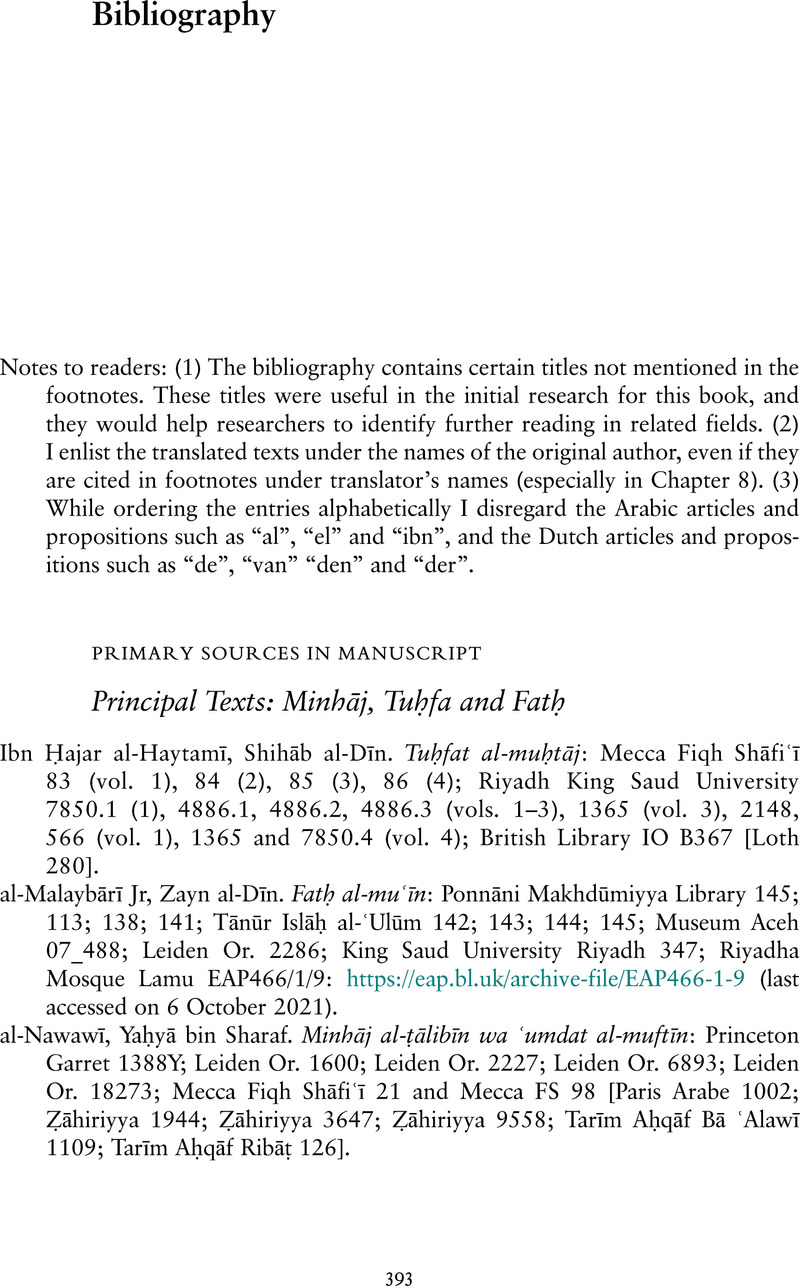Book contents
Bibliography
Published online by Cambridge University Press: 24 March 2022
Summary

- Type
- Chapter
- Information
- Islamic Law in CirculationShafi'i Texts across the Indian Ocean and the Mediterranean, pp. 393 - 429Publisher: Cambridge University PressPrint publication year: 2022



